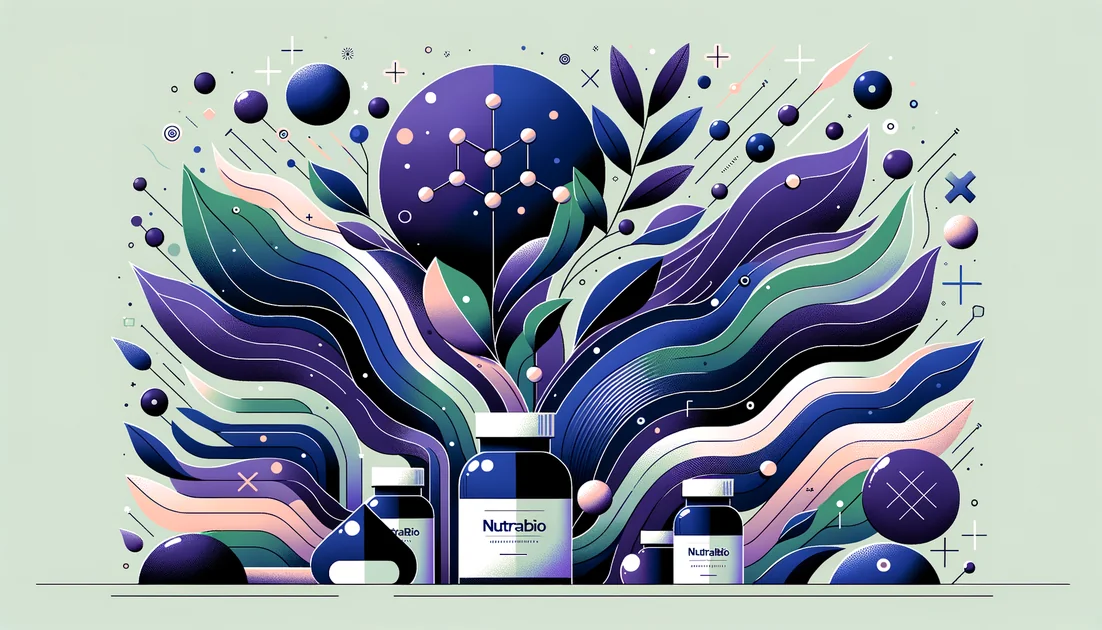Quick Summary
The Verdict
Orchestrated Synergy- •This is a real dependency-chain combo. Magnesium is necessary to ' on' vitamin D, and adding magnesium to vitamin D raises 25(OH)D more than vitamin D alone. Benefits on blood pressure, inflammation, or glycemic markers are possible but small/uncertain over 8–12 weeks. Ideal for people with low D and likely low magnesium intake
- •Still wise to test and personalize. [1][2][4]
Essential Core: Magnesium, Vitamin D
Beneficial Additions: Vitamin K2 (for calcium placement if adding calcium), Calcium (if dietary intake is inadequate)
Optional Additions: None required for the core synergy
The Synergy Hypothesis
If magnesium is low, vitamin D can be 'gas without a spark'—it's present but not fully activated. Ensuring adequate magnesium should magnify the benefit of vitamin D supplementation by improving its activation and downstream calcium handling.
How the system works →
Think of your calcium-bone system like a kitchen. Vitamin D is the main light switch that lets you see (absorb calcium). But the switch won't work unless the circuit is complete—magnesium is the wiring and power. When magnesium status is good, your liver and kidneys vitamin D into its active form, your gut pulls in more calcium, and PTH doesn't have to overreact. The result is steadier calcium, stronger bones, and fewer surprises. [3][6][7]
Solo vs Combination
Vitamin D alone can raise your levels and boost calcium absorption, but if magnesium is low you might see a weaker or erratic response. Magnesium alone supports thousands of reactions and PTH balance, but it won't raise vitamin D on its own. Together, magnesium removes the bottleneck so your usual vitamin D dose 'takes' more reliably—think of it as getting the most from the vitamin D you already take. [1][3][6][7]
The Ingredients
Magnesium +
cofactor• essential
Acts like the spark plug for vitamin D: it powers the liver and kidney enzymes that vitamin D into its working forms and helps parathyroid hormone (PTH) keep calcium in balance. [3][5][6]
Works Alone?
Yes
Needs combination
What if I skip this? (high impact, combo breaks)
How They Work Together
Magnesium + Vitamin D
enables activation
Vitamin D is like raw fuel—your liver and kidneys must modify it before it works. The enzymes that do this need magnesium to run, so low magnesium means sluggish vitamin D. [3][5]
Mg → activates → D
Magnesium is the mechanic that tunes up vitamin D's engine.
Magnesium + Vitamin D
dual pathway
Vitamin D boosts calcium absorption; magnesium supports normal PTH secretion and sensitivity. When magnesium is low, PTH and active vitamin D can misfire, leading to low calcium. [6][7]
D ↑ Ca absorption; Mg ↔ PTH
Vitamin D opens the door for calcium; magnesium manages the thermostat so the house doesn't overheat or freeze.
Magnesium + Vitamin D
mitigates side effect
When 25(OH)D runs high, magnesium status influences enzymes that convert vitamin D into safer breakdown products (e.g., 24,25(OH)2D). RCT data suggest magnesium can shift vitamin D metabolism toward balance. [3]
- •Signal shown in metabolite shifts
- •Clinical impact needs more trials.
High 25(OH)D → Mg → ↑24,25(OH)2D
Magnesium is the safety valve on vitamin D's pressure cooker.
How the system works in detail →
Think of your calcium-bone system like a kitchen. Vitamin D is the main light switch that lets you see (absorb calcium). But the switch won't work unless the circuit is complete—magnesium is the wiring and power. When magnesium status is good, your liver and kidneys vitamin D into its active form, your gut pulls in more calcium, and PTH doesn't have to overreact. The result is steadier calcium, stronger bones, and fewer surprises. [3][6][7]
How to Take This Combination
Timing Protocol
- •Take vitamin D with a meal (morning or midday). Take magnesium with meals
- •Try evening for relaxation or earlier if it affects your sleep. If you use high-dose calcium or iron supplements, separate by 2–3 hours.
Doses
Magnesium: 200–400 mg elemental daily with vitamin D; aim for steady daily intake rather than sporadic big doses. [8][3]
Vitamin D: 1,000–2,000 IU daily with adequate magnesium; take with a meal. [7][9][10]
⚠️ Order matters
- 1.
Take vitamin D
- 2.
Magnesium-powered enzymes activate vitamin D
- 3.
Active vitamin D boosts calcium absorption
- 4.
PTH and magnesium keep calcium steady
- 5.
Bones get what they need
Ratio Requirements
Flexibility: recommended
Can add:Vitamin K2 (for directing calcium), Calcium (if dietary intake is low or per clinician advice)
Should avoid:Mega-dose vitamin D without checking magnesium and calcium, Taking magnesium at the same time as certain antibiotics (tetracyclines/fluoroquinolones) or bisphosphonates—separate per label/clinician, High-dose vitamin D with thiazide diuretics without monitoring calcium
The Evidence
- •Strong physiological rationale and a randomized trial showing Mag+D beats D alone for raising 25(OH)D. However, not all downstream outcomes improve beyond D alone in short-term trials
- •Meta-analysis shows small anti-inflammatory benefits in certain groups. Verdict: enabling synergy for vitamin D status, modest clinical impact so far. [1][2][4]
2 combination studies — studied together 0 pharmacokinetic, 2 clinical, 3 mechanistic
View key study →
12-week double-blind RCT in overweight/obese adults (n≈95) with three arms: Mag+D (≈360 mg Mg glycinate + 1000 IU D3, thrice daily), D alone, and placebo. Mag+D produced the largest rise in 25(OH)D and lowered systolic BP in those starting >132 mmHg. [1]
- •More reliable rise in vitamin D status (25[OH]D) than D alone
- •Limited short-term changes on bone turnover or glycemic markers
- •Signals for inflammation reduction in pooled analyses.
Read full technical summary →
This is a true dependency-chain combo. Magnesium is the spark plug that activates vitamin D's enzymes; without it, your vitamin D may underperform. A randomized trial in overweight/obese adults found Mag+D increased 25(OH)D more than D alone, with a subset blood-pressure benefit, while another trial saw no extra gains on bone turnover or glucose—so expect better vitamin D labs first, and only modest downstream effects. Take vitamin D with food (especially some fat) and keep daily magnesium adequate. Cheap, low-risk for most; strongest use-case is people with low D and marginal magnesium intake. [1][2][4][9][10][7]
Cost
Estimated Monthly Cost
$10–20/month for Mag+D at practical doses.
View breakdown →
Magnesium: $8–15/month
Vitamin D: $2–5/month
- •Both are core
- •Using only vitamin D saves ~$8–15/month but risks under-response if magnesium is low.
Money-saving options
- Food-first vitamin D + magnesium only
- Seasonal vitamin D (winter) while keeping daily magnesium year-round
Alternative Approaches
Vitamin D3 + K2 (no magnesium)
Vitamin D3, Vitamin K2 (MK-7 or MK-4)
+Improves calcium use and may help keep calcium out of arteries; simple 2-ingredient bone focus.
−Doesn't fix the vitamin D activation bottleneck if magnesium is low.
Choose if:Diet already supplies ~300–400 mg/day magnesium and labs don't suggest deficiency.
Food-first D + Magnesium
Sunlight/food vitamin D (fatty fish, fortified dairy), Magnesium supplement (glycinate/citrate)
+Avoids high-dose vitamin D pills; leverages diet and lifestyle.
−Hard to reach target 25(OH)D in winter or with limited sun; intake can be inconsistent.
Choose if:Mild insufficiency, lots of outdoor time, or preference to minimize supplements.
Magnesium + Vitamin D + Calcium (targeted)
Magnesium, Vitamin D3, Calcium (as needed to meet 1000–1200 mg/day total)
+Complete mineral support when dietary calcium is low.
−Higher pill burden; watch Ca:Mg balance and kidney stone risk.
Choose if:Low calcium diet, postmenopausal bone health under clinician guidance.
Safety Considerations
Vitamin D is fat-soluble; chronic excess can cause high calcium with nausea, confusion, arrhythmias, and kidney injury—avoid long-term doses beyond your needs (UL 4,000 IU/day for adults without supervision). Thiazide diuretics with vitamin D raise hypercalcemia risk. Magnesium is generally safe at 200–400 mg/day but may cause diarrhea (esp. oxide); those with significant kidney disease should avoid unsupervised magnesium due to hypermagnesemia risk. Magnesium chelates some antibiotics and bisphosphonates—separate by hours. [7][8]
⚠️ Contraindications
- ✗People with hypercalcemia or primary hyperparathyroidism unless closely supervised. [7]
- ✗People with significant kidney impairment (e.g., eGFR <30) unless supervised due to magnesium accumulation risk. [8]
- ✗Those on interacting drugs (certain antibiotics, bisphosphonates, thiazides, steroids) without a clinician's plan. [7][8]
Common Misconceptions
- ✗"More vitamin D is always better." In reality, very high doses can cause hypercalcemia; aim for enough, not excess. [7]
- ✗"Magnesium always makes you sleepy at night." Many find it relaxing, but others feel wired—timing is individual. [11]
- ✗"Taking vitamin D on an empty stomach is best." Meals—especially with some fat—generally improve absorption. [9][10]
Common Questions
Can I take vitamin D without magnesium?
When should I take them?
Do I need a specific dose ratio?
Is this safe with my medications?
Interaction Network Details →
Magnesium:The mineral that powers vitamin D's enzyme switches.
Vitamin D:The sunshine hormone that helps you absorb calcium.
D activation:The step where magnesium flips vitamin D "on."
Calcium absorption:Pulling calcium from your food into your bloodstream.
PTH balance:The hormone that keeps calcium steady; it needs magnesium.
Strong bones:Solid bones without calcium chaos.
Visual network diagram coming in future update
You might also like
Explore more of our evidence-led investigations, comparisons, and guides across every article style.

NutraBio
NutraBio: The Transparency Standard—with Prices That Mostly Add Up



Broccoli Extract (sulforaphane-rich)
On a hazy summer morning in eastern China, volunteers lined up for a lime-and-pineapple drink that had one odd ingredient: powdered broccoli sprouts. Within 24 hours, their bodies were flushing out more benzene—a carcinogen from air pollution—than the day before. A vegetable extract, not a drug, had quietly turned up the body's own detox gears. What else could this bitter green do? [3]

Memory Stack With Real Clinical Data
Dual-core, theoretical synergy: both work on their own; together looks additive with plausible complementarity, but no direct human A+B head-to-head proof yet.

Tocotrienols
The stealthier cousins of vitamin E—built with springy tails that move differently in cell membranes and behave differently in your body.

